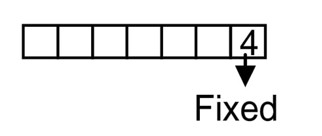14. An experiment consists of rolling a die and then tossing a coin once if the number on the die is even. If the number on the die is odd, the coin is tossed twice. Write the sample space for this experiment.
14. An experiment consists of rolling a die and then tossing a coin once if the number on the die is even. If the number on the die is odd, the coin is tossed twice. Write the sample space for this experiment.
-
1 Answer
-
14. The possible outcome when a coin is tossed is a head or a tail. When a die is thrown we can have the possible outcome 1, 2, 3, 4, 5 and 6. So, the desired sample space is
S = { (2, H), (2, T), (4, H), (4, T), (6, H), (6, T), (1, H, H), (1, H, T), (1, T, H), (1, T, T), (3, H, H), (3, H, T), (3, T, H), (3, T, T), (5, H, H), (5, H, T), (5, T, H), (5, T, T)}
Similar Questions for you
3, 4, 5, 5
In remaining six places you have to arrange
3, 4, 5,5
So no. of ways
Total no. of seven digits nos. =
Hence Req. prob.

f (x) = x? – 4x + 1 = 0
f' (x) = 4x³ – 4
= 4 (x–1) (x²+1+x)
=> Two solution
Let z be equal to (x + iy)
(x + iy) + (x – iy) = (x + iy)2 (i + 1)
Equating the real & in eg part.
(i) & (ii)
4xy = -2x Þ x = 0 or y =
(for x = 0, y = 0)
For y =
x2
x =
=
of
=
When
gives c = 1
So
sum of all solutions =
Hence k = 42
Each element of ordered pair (i, j) is either present in A or in B.
So, A + B = Sum of all elements of all ordered pairs {i, j} for and
= 20 (1 + 2 + 3 + … + 10) = 1100
Taking an Exam? Selecting a College?
Get authentic answers from experts, students and alumni that you won't find anywhere else
Sign Up on ShikshaOn Shiksha, get access to
- 65k Colleges
- 1.2k Exams
- 679k Reviews
- 1800k Answers
